The lower end might see pressure. Bajaj’s price aggression could prove fruitful after BS6
In terms of (lower) emissions, the Indian 2W industry will be at par with the most advanced globally, even vs. developed nations such as the US and the EU. While the EU is still working with Euro-5 norms (implementation date for Euro-6 norms not yet decided), the US is substantially behind in terms of emission limits. Advanced technology will come at higher costs and will hit the lower end of the industry more.
NOx to be contained in a big way: The entire system will have to be altered
The NOx emission limit, introduced in BS-4, has to be reduced by 83% under BS-6. In addition, the Non Methane Hydrocarbon (NMHC) emission limit has been introduced for the first time. In order to adhere to these norms, OEMs are

shifting from mechanical fuel injection systems (carburettor-based) to electronic fuel injection systems. This requires tweaking the exhaust system – which means the engine and after-treatment system has to be altered. These changes would imply an additional cost of Rs 5000-8000 per vehicle, says Mr Singh who works with the R&D department of a leading two-wheeler manufacturer. He says that all OEMs are working with different partners and are at different stages of this transition. “One thing is clear – that 2W volumes will fall sharply due to price hikes. Which OEMs will sail through smoothly…only time will tell,” he philosophises.
“One thing is clear – that 2W volumes will fall sharply due to price hikes.”
-Mr Singh (R&D department at a leading two-wheeler manufacturer)
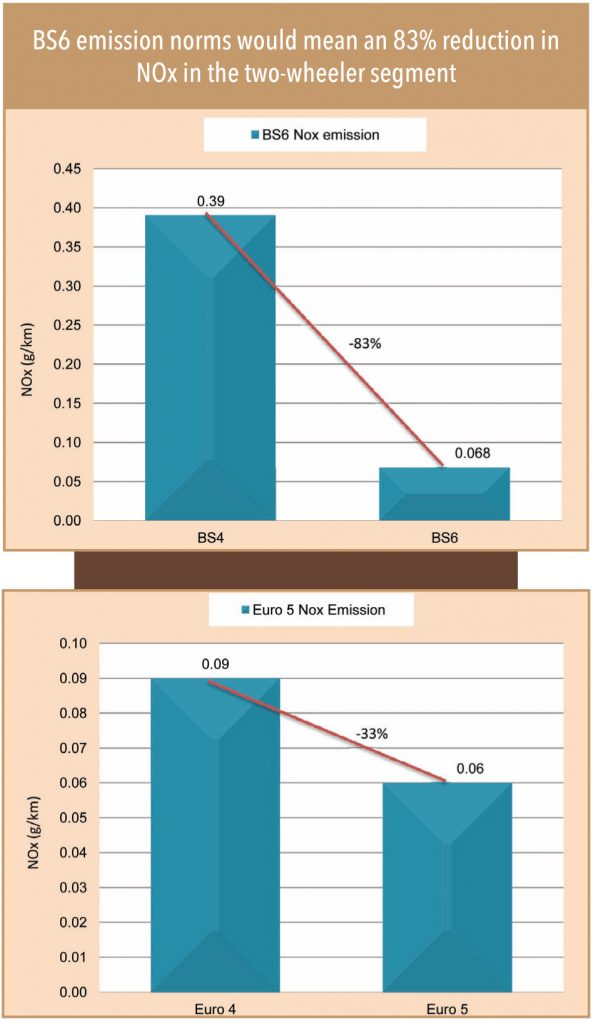
There will be two major areas that will be modified to complete the migration
• Intake system
• Exhaust system
Intake system
• Currently, two-wheelers are able to adhere to BS-4 norms by using carburettors as fuel-intake systems. These are priced at c.Rs 400-800 by OEMs, depending on the variant. Their cost has decreased significantly with ageing and localisation of technology. For example, this part was sold for Rs 1,600 for Yamaha FZ in 2010 (OEM supply), said an employee of an auto component company. But with localisation of parts and increased volumes, prices have plummeted by as much as c.60% over the years.
• After BS-6, OEMs will shift to ‘fuel injection’ systems, which will prove costly due to their high import content. However, costs should reduce with localisation of parts. While component manufacturers will be increasingly localised, some of the sophisticated parts such as fuel injector nozzles would be imported from Thailand and Japan because they are unlikely to be available in the desired quantity in India.
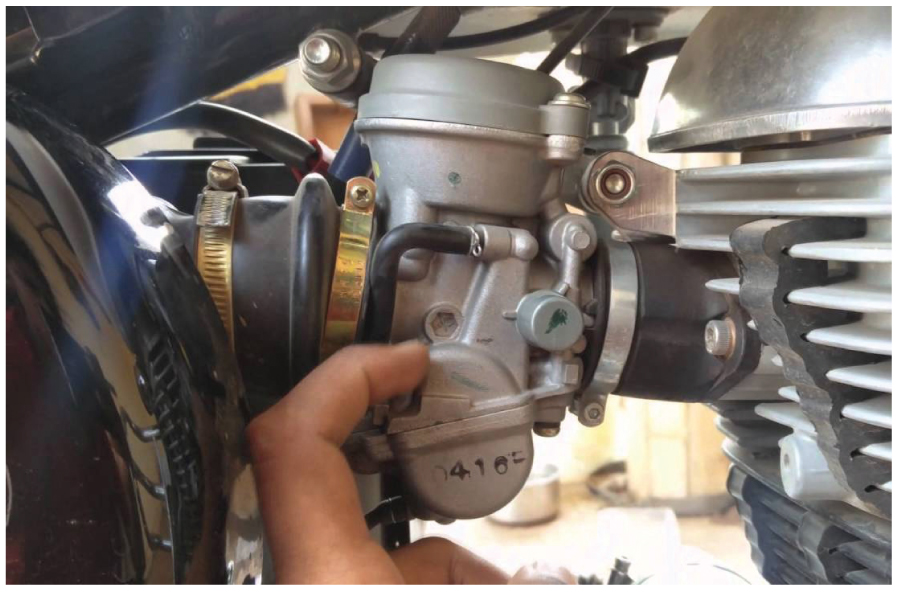
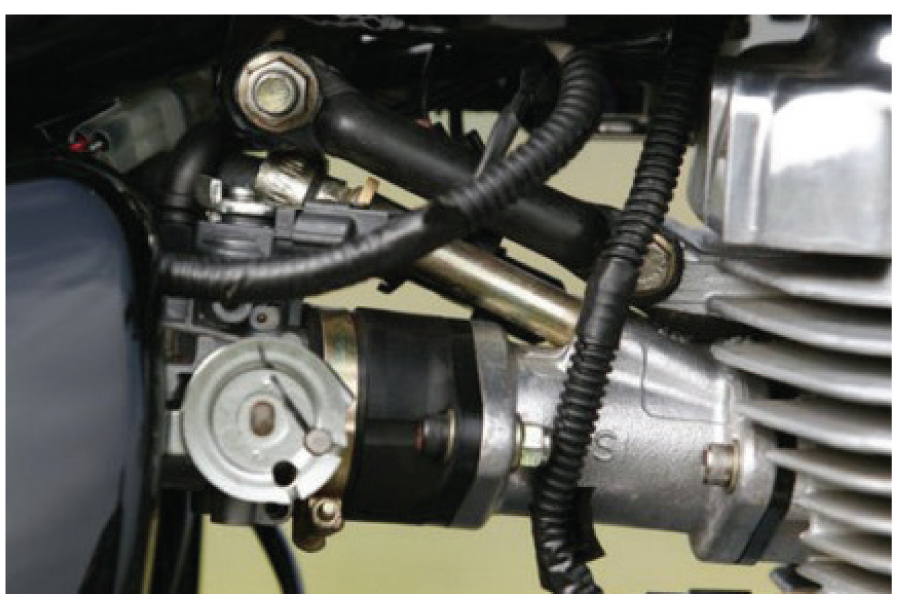

All this information is used by the ECU to meter the fuel far more accurately than the old mechanical system, which relies on sensing the pressure alone. Simply put, the ECU takes inputs from multiple sensors and runs the engine in the most efficient way, resulting in controlled emissions – thereby meeting BS-6 norms.

Exhaust system
In a two-tea hour-long discussion, Mr Bhardwaj revealed that in order to meet BS-6 emission requirements, two-wheelers would have to undergo two changes in their exhaust systems:
Oxygen sensor: O2 sensors are mounted in the exhaust manifold, which monitors the quantum of unburned oxygen in the exhaust. This helps the ECU understand if the fuel mixture is rich (less oxygen) or lean (more oxygen). This sensor is generally cheaper and would cost OEMs Rs 200-350
Muffler (silencer): The bigger change in exhaust systems would be the up-gradation of mufflers to three-way loading, to control NOx emission, apart from reducing carbon monoxide and unburned hydrocarbons – which the existing two-way muffler does. This up-gradation would cost additional Rs 1,000-1,500.
BS-6 requires two-wheelers to be fitted with ‘on board diagnostic’ (OBD) systems to keep a check on emission levels.
OBD stage 1 is applicable from 2020, and stage 2 will be made compulsory from 2023. The transition also coincides with the mandatory usage of CBS/ABS braking systems. “All this means OEMs grappling with additional pressure,” muses Mr Bharadwaj.


Price hikes could be sharp, Bajaj’s strategy might work post BS6
A range of experts believe that scooters/motorcycles would undergo a 10-18% price hikes (including ABS/CBS norms). It seems like Bajaj’s price aggression might become logical after shifting to BS-6, as executive segment motorcycles would cost about Rs 8,000 more, which could lead to customers down-trading.
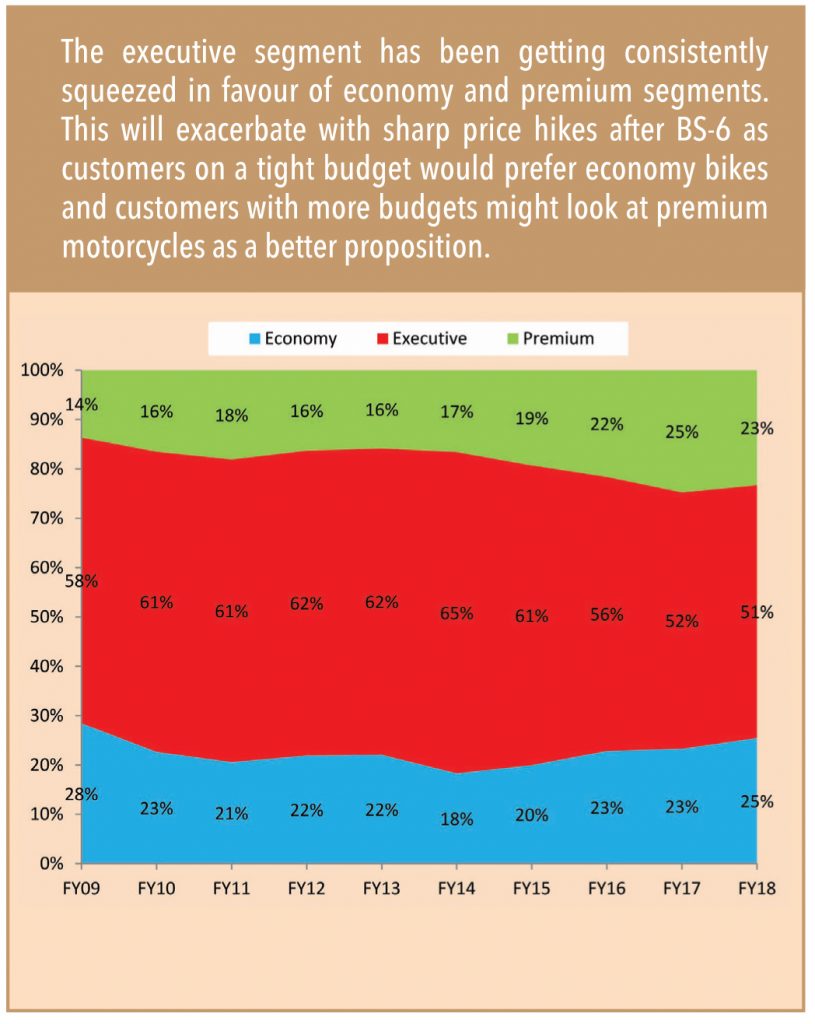
Among the three listed players (Hero, Bajaj, TVS) only five two-wheeler models would be priced under Rs 50,000 (ex-showroom) after BS-6 vs. 15 models currently.

Overall growth could stall for a year or two
The motorcycles segment, which clocked double-digit growth in FY18 after a long period, could see a sharp dip in FY21 as demand is impacted due to a sharp price hike after BS-6 rolls out.
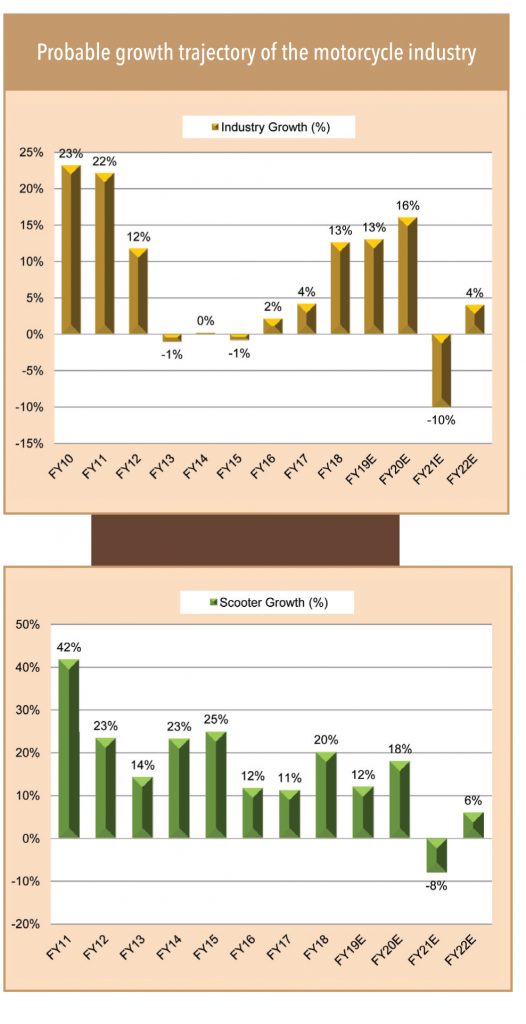
Subscribe to enjoy uninterrupted access